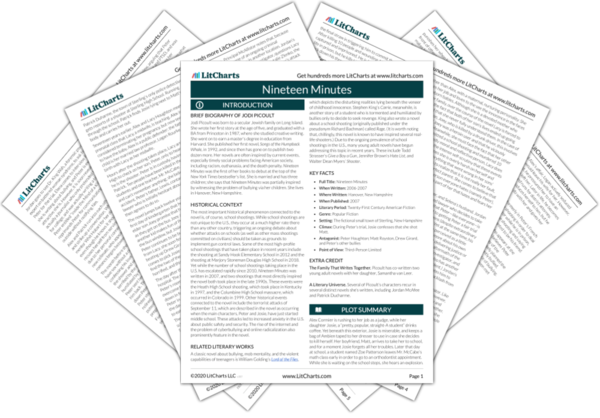On the morning of the trial,
Lacy dresses in black, as if she were going to a funeral. She doesn’t know if
Lewis is coming; he has been sleeping in
Joey’s room. Going into Peter’s room, Lacy gets a copy of
The Picture of Dorian Gray from the shelf. She imagines a portrait depicting a version of herself who expresses all her suppressed emotions. Lewis comes in, wearing his special suit. He and Lacy hold and hands, unable to speak. Meanwhile,
Selena has left out a bowl of Cocoa Krispies for Jordan, the meal he always eats before “battle,” along with a note saying “GOOD LUCK.” His eldest son calls from college, also wishing him luck.
